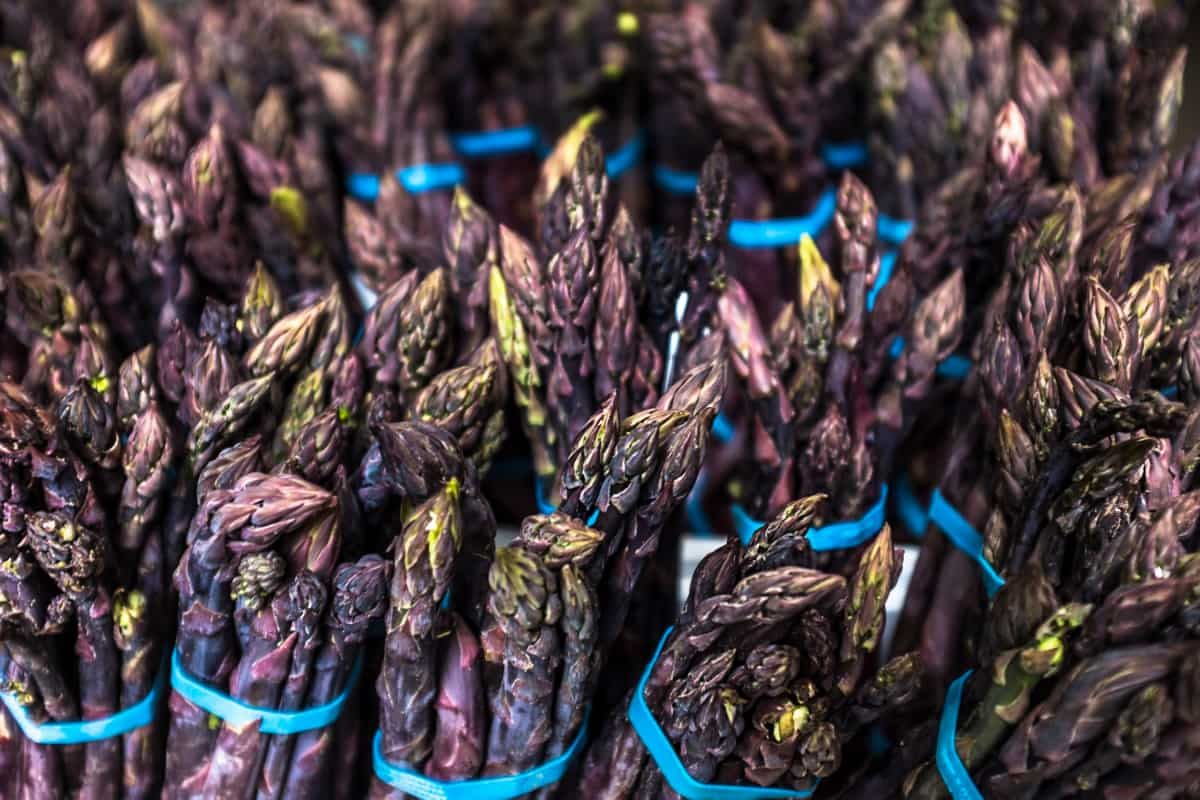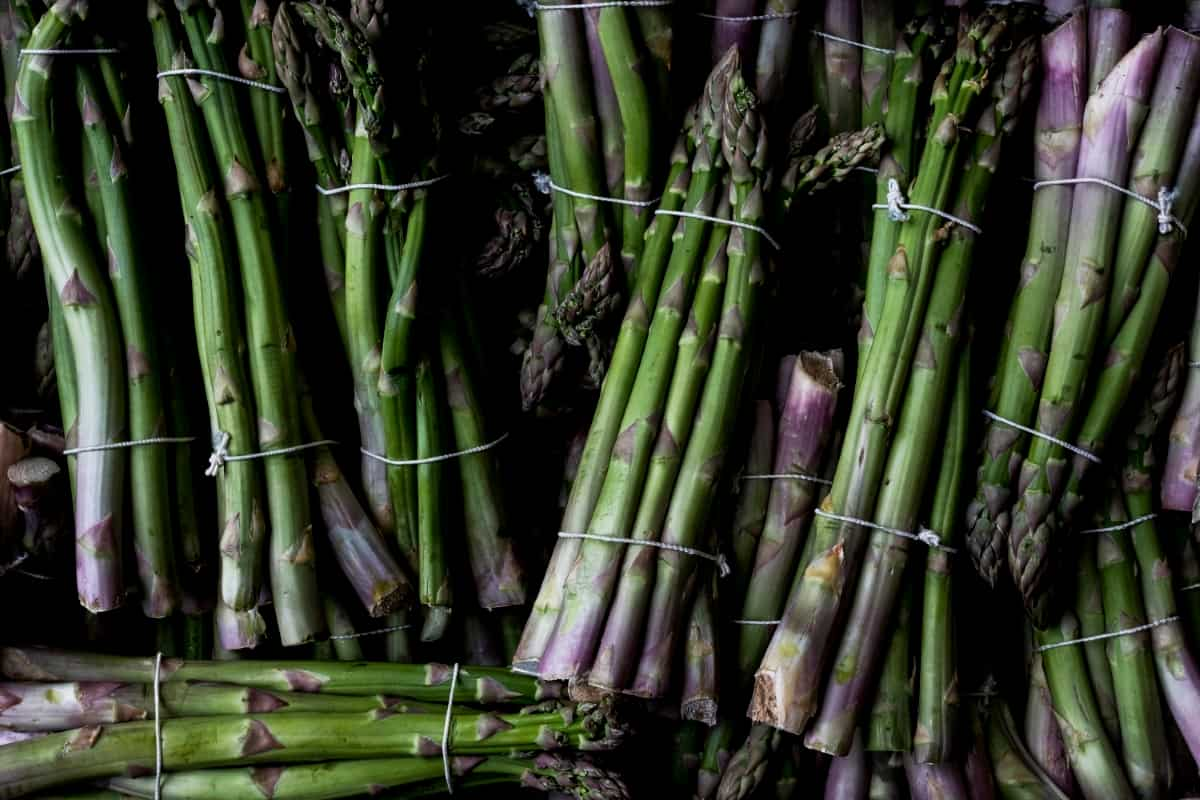Embarking on a journey in the agricultural sector, specifically in the vegetable business plan, requires meticulous planning and a clear understanding of the market. Growing asparagus, which is sometimes ignored in vegetable farming plans, provides a special chance for entrepreneurs aiming to enter a specific market. A well-crafted business plan for asparagus farming should encompass a comprehensive analysis of asparagus profit per acre, integrating insights from existing successful models, as highlighted in an example of vegetable farming business plan.

The vegetable business plan is not just about growing and selling; it encompasses various aspects, from seed selection to market delivery. By focusing on the unique aspects of the asparagus vegetable farming business plan, farmers can position themselves strategically in this competitive market.
Asparagus Farming Business Plan
Understanding the Asparagus Market
In the realm of vegetable farming, understanding the market dynamics for asparagus is crucial. Asparagus, being a specialty vegetable, has a specific market segment that it caters to. To maximize profitability, it’s essential to study the existing demand, pricing trends, and consumer preferences.
This involves analyzing the competitive landscape, identifying key buyers such as supermarkets, restaurants, and local markets, and understanding seasonal variations in demand. A thorough market analysis helps in making informed decisions about production volumes, pricing strategies, and potential market expansion opportunities.
Researching Asparagus Farming Techniques
Successful asparagus farming hinges on employing effective and efficient farming techniques. It involves researching and implementing best practices in asparagus cultivation, including seed selection, soil preparation, planting methods, and irrigation systems. Understanding the growth cycle of asparagus, from sprouting to harvesting, and the necessary care at each stage is vital.
This research should also encompass pest control and disease management strategies to ensure healthy crop yield. Continuously updating farming techniques based on the latest agricultural research and technology advancements can significantly improve the productivity and quality of the asparagus crop.
Identifying Suitable Land and Climate Conditions
Choosing the right location is pivotal for establishing a thriving asparagus farm. Asparagus requires specific land and climate conditions to flourish. This involves evaluating soil quality, ensuring adequate drainage, and assessing the suitability of the local climate for asparagus cultivation. Factors such as temperature, rainfall, and sunlight exposure play a crucial role in the growth of asparagus. Selecting a site that meets these criteria not only enhances the growth potential but also minimizes risks associated with adverse weather conditions and soil incompatibility.
In case you missed it: How and When to Fertilize Asparagus Plants: Requirements and Recommendation

Developing a Comprehensive Financial Plan for Asparagus
A solid financial plan is the backbone of a profitable asparagus farming business. This plan should detail the initial investment required, including land acquisition, equipment, seeds, and labor costs. Estimating operational expenses, such as irrigation, fertilization, pest control, and harvesting, is also crucial.
The financial plan should project revenue based on asparagus yield and market prices, providing a clear picture of the potential profit per acre. Additionally, it should include a contingency fund for unforeseen expenses and a strategy for reinvestment to sustain and grow the business.
Marketing Strategies for Asparagus Products
Developing effective marketing strategies is essential to ensure the success of the asparagus business. This means finding the best ways to connect with possible buyers, like using farmers’ markets, nearby stores, or the internet. Creating a brand identity and promoting the unique qualities of asparagus, such as freshness, quality, and health benefits, can differentiate the product in the market. Engaging in promotional activities, building relationships with buyers, and leveraging social media for marketing can significantly increase the visibility and demand for asparagus products.
Risk Assessment and Mitigation Strategies in Commercial Asparagus Farming
Risk management is an integral part of commercial asparagus farming. It involves identifying potential risks, such as crop failure due to pests or extreme weather conditions, fluctuations in market prices, and operational challenges. Developing a risk mitigation plan includes strategies such as diversifying crops, investing in crop insurance, adopting sustainable farming practices to improve resilience, and maintaining a financial buffer. Regularly reviewing and updating the risk assessment plan ensures that the business is prepared to handle challenges and sustain profitability in the long run.
In case you missed it: Organic Asparagus Farming: Grow Asparagus with these Organic Principles and Practices

Regulatory Compliance and Legal Considerations for Asparagus Farms
Navigating the regulatory landscape is critical for any asparagus farming business. Compliance with agricultural laws and regulations is not just a legal requirement but also a foundation for sustainable business operations. This includes understanding and adhering to local, state, and federal regulations regarding land use, water rights, pesticide use, and labor laws.
Legal considerations also extend to obtaining necessary permits and licenses for operating a farm and selling produce. Ensuring compliance with food safety standards and certifications can enhance marketability and consumer trust. Regularly updating knowledge on legal changes and seeking legal advice when needed is essential to avoid potential legal pitfalls and operate the business smoothly.
Building Partnerships and Collaborations for Asparagus Farming Business
Forging partnerships and collaborations is a strategic move for expanding the reach and efficiency of an asparagus farming business. This could involve partnering with local suppliers for seeds and farming equipment, collaborating with research institutions for advanced agricultural practices, or joining forces with marketing agencies to boost sales.
Building relationships with other farmers can lead to knowledge exchange and shared resources, which is particularly beneficial for new entrants in the field. Collaborations can also extend to governmental and non-governmental organizations for funding, training, and support services. These partnerships not only aid in resource optimization but also open up new avenues for business growth and innovation.
Integrate Sustainability Practices in Asparagus Farming Business Plan
Incorporating sustainability practices in the asparagus farming business plan is not just environmentally responsible but also economically beneficial in the long run. To make farming better for the environment, we can save water, use natural ways to grow crops, and change what we plant to keep the soil healthy.
In case you missed it: Step-By-Step Guide to Planting Asparagus Crowns

We can also use clean energy like solar or wind power to help the environment and save money. Sustainable practices also encompass responsible labor practices and community engagement. By positioning the business as eco-friendly and socially responsible, it can attract a growing segment of environmentally conscious consumers, thus enhancing the brand’s reputation and marketability.
Conclusion
A well-structured business plan for asparagus farming is the key to unlocking its full potential. By emphasizing on market understanding, innovative farming techniques, and strong partnerships, alongside a commitment to sustainability and legal compliance, asparagus farming can be both profitable and environmentally responsible. This strategic approach positions the business for long-term success in the dynamic agricultural landscape.
- Feed Your Flock for Less: Top 10 Tips to Save on Chicken Feed
- Ultimate Guide to Ossabaw Island Hog: Breeding, Raising, Diet, and Care
- Hatching Answers: The Top 10 Reasons Your Chickens Aren’t Laying Eggs
- Eggs and Economics: Breaking Down the Cost of Raising Backyard Chickens
- Defend Your Greens: Proven Methods to Keep Iguanas Out of Your Garden
- Ultimate Guide to Cinnamon Queen Chicken: A Comprehensive Guide for Beginners
- Ultimate Guide to California Tan Chicken: Breeding, Raising, Diet, Egg-Production and Care
- Ultimate Guide to Marsh Daisy Chicken: Breeding, Raising, Diet, and Care
- 10 Types of Chicken Farming Businesses You Can Start for Profits